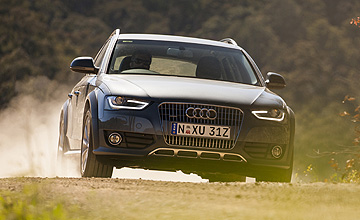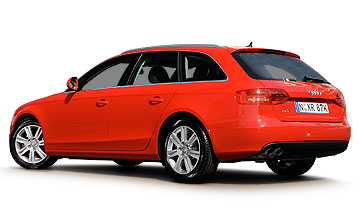
Our opinion
IF YOU cannot bear to be seen in a premium SUV because of the social heat they can evoke these days but want something a little cooler than a boring old luxury sedan, then the latest Audi A4 Avant might be, as for Goldilocks, just right.
Avant is long-time Audi-speak for station wagon, and in this particular case, a larger load carrier than you might expect.
There’s been an A4 Avant since the series ousted the 80 Avant in the mid-1990s, but only now in the late Naughties is the wagon big enough to serve as a serious alternative to an SUV.
Line up new with old and you will see what we mean, since this B8-series A4 Avant is awfully close to the size of the larger A6 Avant (now sadly discontinued in Australia except as the Allroad).
It is now more than 4.7 metres long – an increase of almost 1.2 metres over the old B7 model, and the Audi is also wider by 60mm.
So the latest Avant is a better conveyer of people than before. Little wonder then that in some markets the wagon outsells the sedan, comfortably leading its segment against the equivalent BMW and Mercedes estates in Europe.
Arriving in September last year, the Avant extends the svelte if somewhat fussier-than-expected styling of the A4 sedan, looking better than its sibling as well as the Mercedes C-class and BMW 3 Series equivalents. Even wagon haters should love what Audi has created with the basic two-box shape.
In fact, we think buyers might find the Avant an alluring alternative to the growing ranks of compact luxury SUVs as defined by the now-ageing BMW X3 – as well as Audi’s newer Q5.
Our test car was the front-wheel-drive A4 Avant 2.0 TFSI, employing a 132kW/320Nm 2.0-litre turbocharged FSI direct-petrol injection engine mated to a continuously variable transmission that Audi dubs Multitronic.
Kicking off from $62,500 before anything from the vast options list is applied, it is about $6000 more expensive than the base 118kW/250Nm 1.8 TFSI FWD, but better equipped and – according to Audi – a more popular proposition with buyers.
Beneath it in the range is a 105kW/320Nm 2.0 TDI FWD, while more money buys you a 140kW/400Nm 2.7 V6 TDI FWD, as well as the recently released 155kW/350Nm 2.0 TFSI quattro all-wheel drive boasting a handy power increase and Audi’s nifty dual-clutch gearbox called S-tronic.
So the 132kW/320Nm 2.0TFSI Multitronic sits bang in the middle of a vast model matrix, but don’t believe for one second that it feels downmarket or barebones inside.
Audi is as renowned as a maestro of interior design, as it is for exterior architecture, and the A4 is no exception.
Step inside for the first time and the feeling is utterly first class, thanks to materials of unmatched tactility. Touching virtually any part of the dashboard is like running a finger along fine silk or sumptuous suede, when really it is all (mostly) just pleasurable plastic.
The whole dashboard is geared towards the driver, and so just beyond the lovely three-spoke steering wheel are just about the clearest and crispest set of instruments you are likely to find at this price.
Gorgeous white-lit dials are offset by a clear and super-concise centre screen displaying a myriad of data, from a digital speedo to comprehensive trip computer info.
Our car was fitted with (a pricey) satellite navigation device, and its display arrows also made it on to that screen, so the driver’s eye line did not have to move too far away from the road ahead when following directions.
Having a navigation system means Audi’s lauded MMI controller sits ahead of the floor-mounted gear lever, and this knob is the control nerve centre for much of the car’s media, audio and (of course) navigation functions.
Using a colour-coded screen mounted high in the centre console, the driver or front passenger can go deep into all sorts of sub menus to change or personalise vehicle settings. It sounds complicated but, with a little bit of practice, soon becomes second nature.
Familiarisation is also necessary to master the climate control switches located at the base of the console, but – once again – it is all easy after a while.
About the only dash-related quibble we have is with the cupholder recess located where the handbrake used to be (the A4 now has an electric button for a park brake). It looks cheap and out of place. Maybe one of those sliding jalousies is needed here. Maybe it’s in the Audi options list, but who has a year to go through that?
German cars generally have firm but comfy front seats, and the A4’s are no exception, providing ample support for hours and hours on end during our long drive days with it.
The rear bench, too delivers sufficient comfort for two – as long as they are not lanky or long-legged, as the front occupants then have to slide forward to more comfortably accommodate them.
Beyond that, the load area is carpeted, exquisitely finished like the rest of the A4 interior, and certainly spacious enough. But that rakish rear window line does cut into load capacity, although we seriously doubt anybody who has explored the Avant this far in will care.
With rear seats erect, the cargo area capacity is 490 litres – a 10L increase over the A4 sedan. Drop the 60/40-split/fold rear seats and this balloons to 1430L. For the record, the load floor is 1.03 metres long with seats up and 1.77m with the rear seats folded, while the load-through width measures one metre.
Audi fits a steel space-saver spare under the cargo floor, and this is all you can get since the battery that also lives in the vicinity precludes a full-sized alloy wheel. Audi says that the more expensive quattro versions do not lose any cargo capacity despite their four-wheel-drive hardware.
Our test car included the optional push-button electric tailgate opener. Two observations: firstly, ensure heads clear the moving door as it will hit with a thud; and, secondly: this is a real danger since you can only close the tailgate electrically by pushing the button at the trailing edge of the door.
Finally, the Avant can carry up to 90kg on its roof, or tow 1900kg if an approved tow bar is fitted.
Which is more than enough for the 2.0-litre turbo engine to haul around.
A detuned version of the 147kW/280Nm 2.0 TFSI direct-injection petrol powerplant made famous in the Mk5 Golf GTI is slung over the front axle.
In this application, it delivers less power (132kW between 4000 and 6000rpm) but more torque (320Nm between 1500 and 3900rpm).
And, on the move, this oozy smooth 2.0 TFSI will immediately win you over with its response, spinning strongly but quietly all the way to the tachometer’s red line.
Especially strong forward thrust is available if you are willing to slot the lever into manual mode and explore the engine’s higher rev range via the well-placed paddle shifts on the wheel, yet the Avant will cruise silently at low revs in top gear all day and still have plenty in reserve if you need to suddenly move forward quickly.
But here is where our biggest gripe with this car lies.
At take-off speeds, or when selecting reverse gear, the Multitronic gearbox hesitates annoyingly, if not alarmingly.
Waiting to join a rushing queue of cars, precious moments are lost as both the engine and transmission seem to debate before deciding to spool up and get on with it. If you’re in a hurry and plant the accelerator pedal to the floor, an eternity will seem to pass before the front wheels kick violently into action, just before the traction control electronics smooth everything out.
This lag-induced frustration can be minimised by simply driving more gently and planning ahead, but why should you have to compromise?
Straight after driving the $62,500 2.0 TFSI Multitronic, we sampled the more powerful 155kW/350Nm 2.0 TFSI quattro with S-tronic, and we can categorically say that this powertrain combination is worth the extra $14,000 extra.
Our advice is to either stretch to the latter, go half way and settle for the $68,900 2.7 V6 TDI Multitronic, or save yourself $4700 and plonk for the lovely 2.0 TDI Multitronic, with its handy well of low-down torque, which makes take-off acceleration easier.
However, if the lag is not an issue for you then a pleasant surprise awaits because excellent fuel consumption is the 132kW 2.0 TFSI Multitronic engine’s piece de resistance, with about 11L/100km in city traffic and a low 7.2L/100km on the open road recorded over our 1100km-driving route.
Our car also featured the $3390 ADS Audi Drive Select, which is a basically an adjustable damper system controllable by a toggle switch on the centre console.
We recommend this option if you seek sharp handling and flat roadholding with minimum body roll when the roads get interesting, combined with a supple ride for all other times. A sort of BMW-sporty meets Lexus-comfort hybrid compromise is the ADS’s intended purpose.
The reality is that the A4 Avant with ADS is neither quite a BMW nor a Lexus, since the steering – though beautifully weighted and very responsive when in Sport mode – feels artificial and totally devoid of feel.
We’re getting sick of saying this: why can’t makers of front-wheel drive vehicles match the steering purity of, say, a Ford Mondeo?
Then there is the ride – up until recently a real Audi bugbear.
Set the ADS to ‘Auto’ or ‘Comfort’ and it works a charm, with an isolated absorbency available pretty much at all times.
On our blacktop, the suspension still feels a tad too rigid, as if there isn’t enough spring travel built in, but the trick dampers do a great job soaking up bumps and irregularities in a way that makes the old A4’s ride seem torturous by comparison.
In fact, we were pleasantly surprised at how well the suspension copes with loose gravel roads too, keeping the Audi flat yet cushioned even at fairly high speeds.
However, press the ‘Sport’ mode and the Avant’s damping capability is simply either too hard on our imperfect suburban roads, or too busy when travelling on highway bitumen. Unless you can shrink your car and drive it along your bathroom sink, we suggest you shouldn’t bother.
So should you bother with this middle-of-the-range A4 Avant?
It is the sort of car that engenders deep respect the more you drive it, and you always feel as if you are being pampered by the brilliantly realised interior.
The Audi also looks great, is comfy and fun to drive if you are prepared to fork out more money for Drive Select, and can almost run on the smell of an oily rag.
But we can barely bear to live with the 132kW engine/Multitronic combination’s sluggish step-off acceleration.
So, while we would certainly recommend the cheaper and more expensive Avant models over an unnecessarily hefty SUV, unlike Goldilocks, we found that the one in the middle was just not quite right after all.
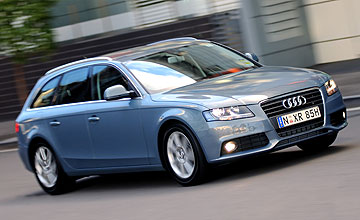
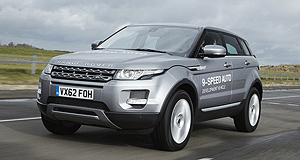
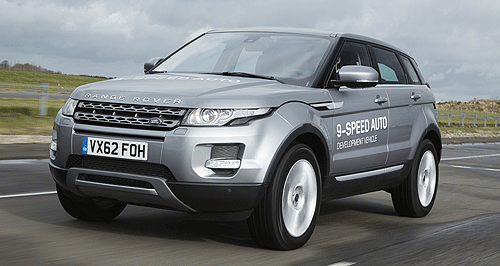
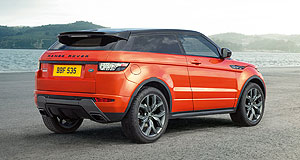

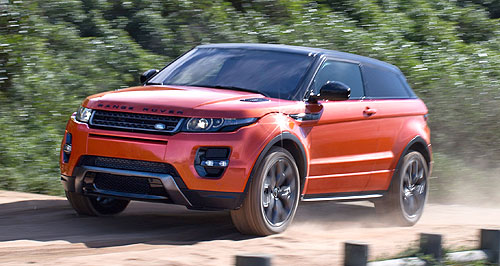
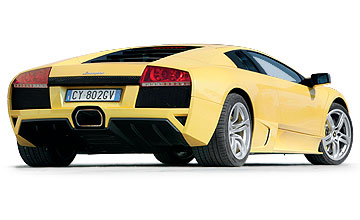


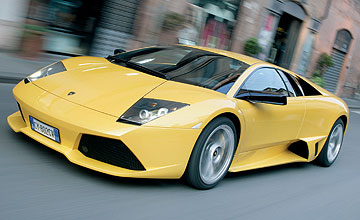
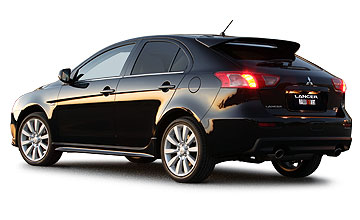
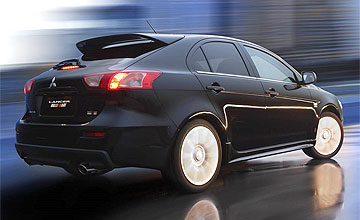
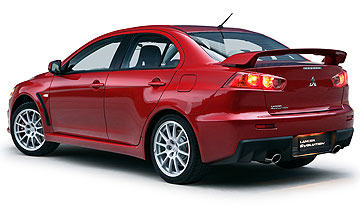
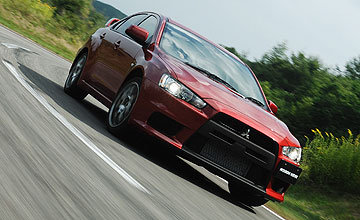
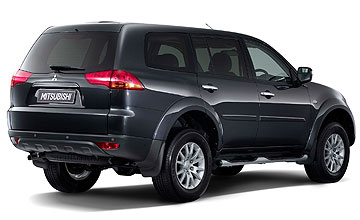

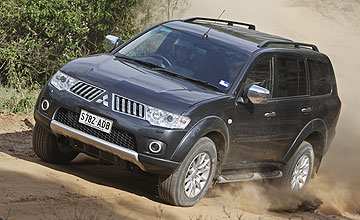
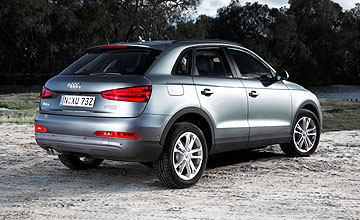
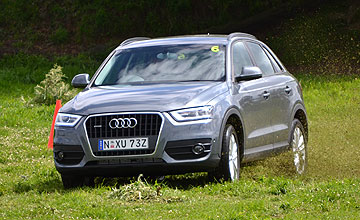


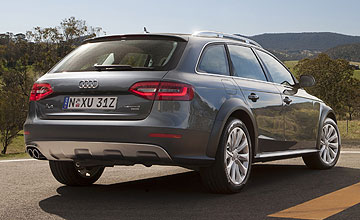
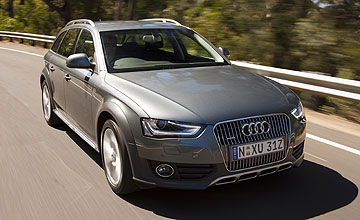 \
\